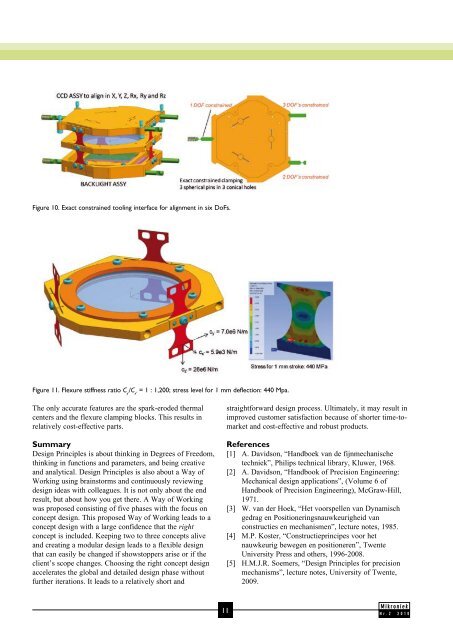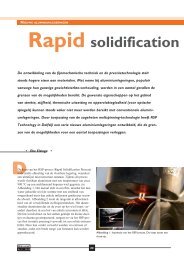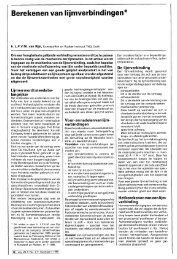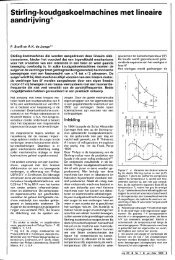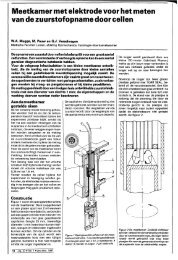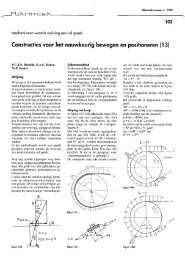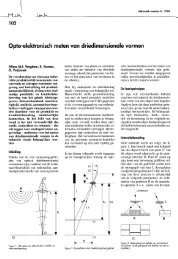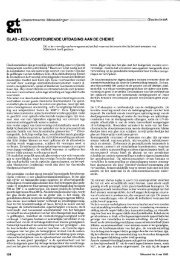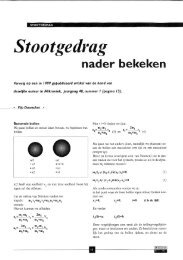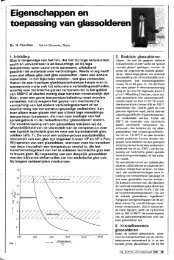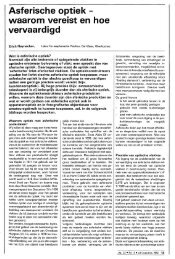Design Principles - DSPE
Design Principles - DSPE
Design Principles - DSPE
Create successful ePaper yourself
Turn your PDF publications into a flip-book with our unique Google optimized e-Paper software.
Figure 10. Exact constrained tooling interface for alignment in six DoFs.<br />
Figure 11. Flexure stiffness ratio C y’ /C x’ = 1 : 1,200; stress level for 1 mm deflection: 440 Mpa.<br />
The only accurate features are the spark-eroded thermal<br />
centers and the flexure clamping blocks. This results in<br />
relatively cost-effective parts.<br />
Summary<br />
<strong>Design</strong> <strong>Principles</strong> is about thinking in Degrees of Freedom,<br />
thinking in functions and parameters, and being creative<br />
and analytical. <strong>Design</strong> <strong>Principles</strong> is also about a Way of<br />
Working using brainstorms and continuously reviewing<br />
design ideas with colleagues. It is not only about the end<br />
result, but about how you get there. A Way of Working<br />
was proposed consisting of five phases with the focus on<br />
concept design. This proposed Way of Working leads to a<br />
concept design with a large confidence that the right<br />
concept is included. Keeping two to three concepts alive<br />
and creating a modular design leads to a flexible design<br />
that can easily be changed if showstoppers arise or if the<br />
client’s scope changes. Choosing the right concept design<br />
accelerates the global and detailed design phase without<br />
further iterations. It leads to a relatively short and<br />
straightforward design process. Ultimately, it may result in<br />
improved customer satisfaction because of shorter time-tomarket<br />
and cost-effective and robust products.<br />
References<br />
[1] A. Davidson, “Handboek van de fijnmechanische<br />
techniek”, Philips technical library, Kluwer, 1968.<br />
[2] A. Davidson, “Handbook of Precision Engineering:<br />
Mechanical design applications”, (Volume 6 of<br />
Handbook of Precision Engineering), McGraw-Hill,<br />
1971.<br />
[3] W. van der Hoek, “Het voorspellen van Dynamisch<br />
gedrag en Positioneringsnauwkeurigheid van<br />
constructies en mechanismen”, lecture notes, 1985.<br />
[4] M.P. Koster, “Constructieprincipes voor het<br />
nauwkeurig bewegen en positioneren”, Twente<br />
University Press and others, 1996-2008.<br />
[5] H.M.J.R. Soemers, “<strong>Design</strong> <strong>Principles</strong> for precision<br />
mechanisms”, lecture notes, University of Twente,<br />
2009.<br />
11<br />
Nr.2 2010


